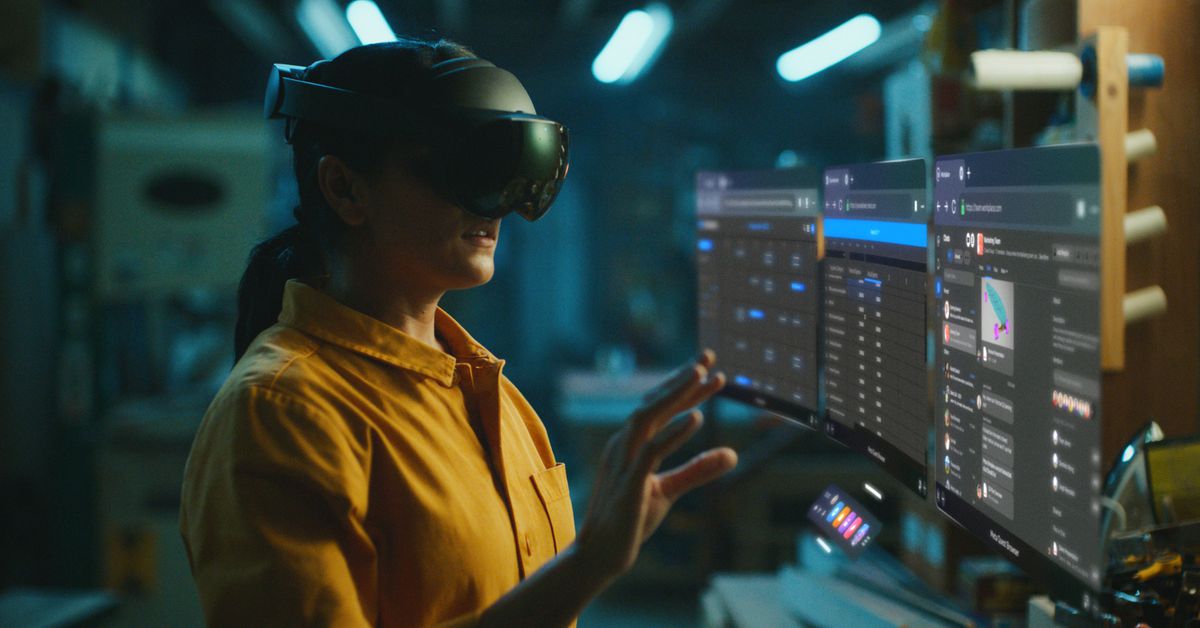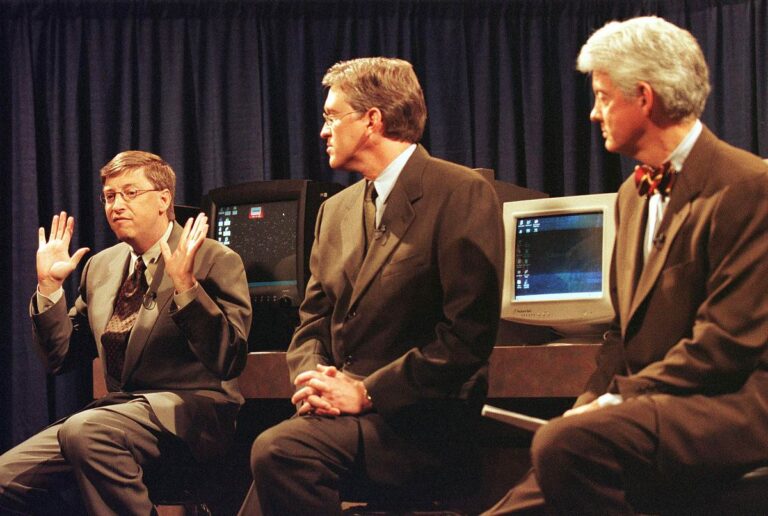
Meta, the company formerly known as Facebook, released its long-awaited new virtual reality headset on Tuesday during Meta Connect, its annual developer conference.
The new headset, called the Quest Pro, is a high-end device meant to have functionality rivaling a computer. In his keynote on Tuesday, Meta CEO Mark Zuckerberg called the new device “the next major step for VR” and “an important milestone on the path to building the metaverse.”
“We’re in a moment now when a lot of the technologies that will power the metaverse are starting to take off,” Zuckerberg said at Connect.
Zuckerberg is betting that one day, AR/VR devices will become as ubiquitous as mobile phones or laptops, and the Quest Pro is an important way for the company to demonstrate the promise of that vision. The Quest Pro is Meta’s first “mixed reality” device — meaning that you can see virtual objects overlaid onto your everyday real-life surroundings, unlike pure VR in which you’re completely detached from reality. The physical headset is designed to fit more comfortably on your head, and it comes with inward-facing eye tracking sensors, so that your avatars in the metaverse can naturally mimic your facial expressions.
These are definite improvements to Meta’s existing VR/AR products. But there’s a major barrier that could stop the Quest Pro from fulfilling Zuckerberg’s ambitions to make his metaverse plan mainstream: the price tag. The Quest Pro costs nearly $1,500. That’s a price point that’s inaccessible to many everyday consumers, particularly during a period of economic downturn. It’s a 275 percent increase in the price point of its last AR/VR release, the Quest 2.
That’s why Meta is selling its new AR/VR device as a work product, for people like architects, product designers, and molecular chemists who might be willing to pay up for a high-powered tool. Many of these professionals use 3D modeling in their day-to-day jobs that could justify the headset’s cost. That’s also why Meta announced partnerships with Adobe to put its 3D design software on VR, as well as with Microsoft to put its entire office suite of products on the Quest Pro.
In Meta’s Connect presentation Tuesday, the company gave some examples of how certain companies are using its AR/VR products already, such as the shoe companies Puma and New Balance designing products in VR, and the pharmaceutical company Novartis doing nanomolecular design with the technology.
But if Meta is pitching its marquee metaverse product as a high-end product for niche industry professionals, where does that leave everyone else? If the metaverse is going to be the next wave of computing akin to the modern internet or mobile phone, as Zuckerberg predicts it will, then it needs a critical mass of users — not just a small group of professional users who use it for specific industry applications.
Early smartphones or proto-smartphones like the iPhone and BlackBerry were also prohibitively expensive for many everyday consumers at first, but eventually wireless providers began to help subsidize their access. And the utility of these phones for a wide variety of professions and interests (like being able to, for the first time, check email on the go, or combine an mp3 player with a phone) made them worth the cost — which, for the iPhone, actually increased over time. For Meta’s AR/VR products, there’s no outside network provider giving a subsidy at this point, and the use cases aren’t as strong for everyday users. That could change in the future, though, if the use cases for AR/VR become more compelling in both work and social settings.
To Meta’s credit, building AR/VR is expensive. And Meta has, to date, produced some of the most affordable AR/VR headsets on the market. Zuckerberg recently told The Verge that the company’s strategy isn’t to make money from its AR/VR hardware, and many speculated that it was selling its other AR/VR product, the Quest 2, at a loss for $399. (Before August, it was $299 — making it several hundred dollars cheaper than some of its leading competitors.)
But the Quest Pro, like many emerging technologies, faces other barriers — like the fact that it can only be used for about one to two hours with a full charge, making it hard to use outside the home or office space where a charging station is handy. And the fact that its avatars still don’t have all the convincing qualities of regular human life, like legs (Zuckerberg has promised those at some point in the near future).
But the biggest challenge for Meta will be its accessibility. The personal computer, internet, and cellphone all revolutionized society. But these devices only started drastically reshaping the way we communicate once they were accessible and affordable enough to become mainstream. Meta indicated on Tuesday that it’s serious about improving the quality of the technology it offers in VR/AR, even if it has a long way to go. But it’s facing an even more pressing challenge: We’re not yet at the point where the products closest to achieving the metaverse vision are at a justifiable price to the everyday user.





